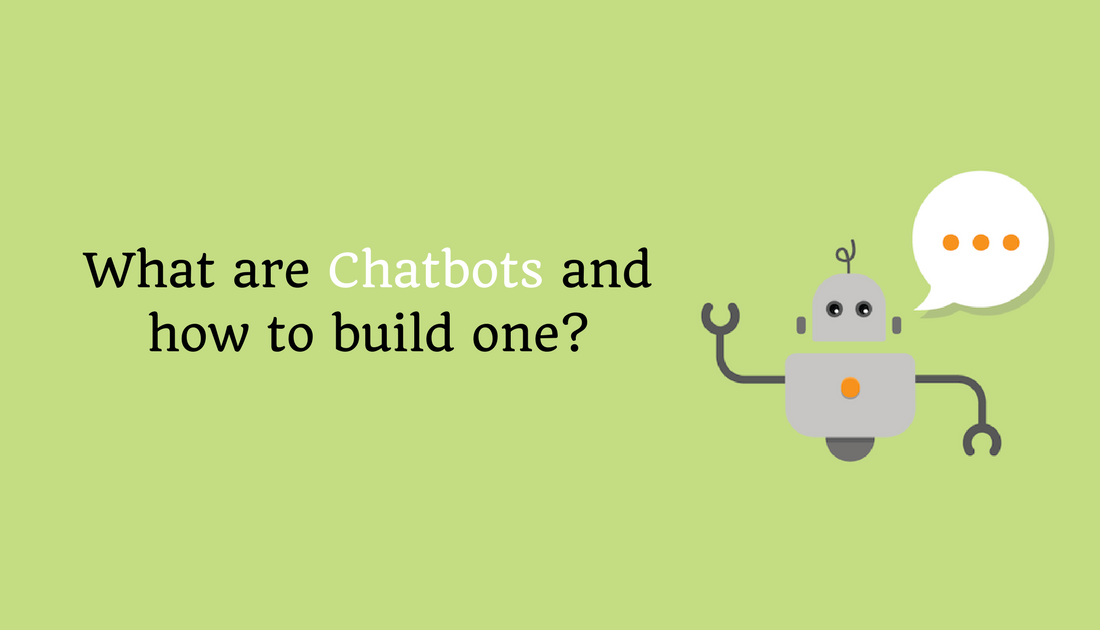Chatbot Market Overview

Author : karthikeyan M 10th Nov 2022
Knowing what’s happening in the chatbot industry right now wouldn’t hurt before we go on this thrilling trip.
A chatbot application, at its most basic, is a computer program that mimics and interprets human interaction (spoken or typed), enabling users to converse with digital gadgets as if they were talking to real people. Chatbots can be as essential as one-line programs that respond to straightforward questions, or they can be as complex as digital assistants that learn and develop over time to provide ever more individualized service as they acquire and process more data.
The Future And Present of Chatbots
Personalization is fundamental to the future of automation, according to 90% of customer service leaders; nevertheless, current chatbot technology is impeding their efforts to undergo digital transformation.
How do chatbots work?
Chatbot functionality processes data to provide answers to requests of various kinds and are powered by AI, automated rules, natural language processing (NLP), and machine learning (ML).
The two primary categories of chatbots are.
- Task-oriented (declarative) chatbots are specialized applications that concentrate on carrying out a single task. They provide automated but conversational responses to user inquiries by using rules, NLP, and very little ML. Think of strong, interactive FAQs when picturing interactions with these chatbots, which are extremely specialized, structured, and best suited for support and service activities. Task-oriented chatbots can manage frequent inquiries, such as inquiries regarding business hours or straightforward transactions without a lot of variables.
Although they employ NLP to enable conversational user experiences, their powers are somewhat limited. These chatbots are currently the most popular ones.
- Task-oriented chatbots are far less complex, interactive, and personalized than data-driven and predictive (conversational) chatbots, often known as virtual assistants or digital assistants. These chatbots use natural language understanding (NLU), natural language processing (NLP), and machine learning (ML) to learn as they go. In order to offer personalization based on user profiles and previous user behavior, they utilize predictive intelligence and analytics. Digital assistants can gradually learn a user’s preferences, make suggestions, and even foresee needs. They can start dialogues in addition to monitoring data and intent.
A couple of examples of consumer-focused, data-driven, predictive chatbots are Apple’s Siri and Amazon’s Alexa.
Advanced digital assistants can also link multiple single-purpose chatbots together, gather data from each one separately, and then integrate this data to carry out a task while maintaining context, keeping the chatbot from getting “confused.”
The advantages chatbots have for both customers and enterprises
Chatbot platforms increase operational effectiveness and save costs for businesses while providing convenience and extra services to both internal staff and external clients. They lessen the need for human engagement while enabling businesses to quickly address a wide range of client inquiries and difficulties.
A chatbot for business allows a firm to scale, personalize, and be proactive all at once—a key differentiation. For instance, a company can only serve a certain number of customers at once while using only human labor. Human-powered firms are constrained in their capacity for proactive and individualized outreach since they must concentrate on standardized models in order to be cost-effective.
Chatbots, on the other hand, enable businesses to interact personally with an endless number of consumers and may be scaled up or down in response to demand and organizational requirements. A company can simultaneously offer millions of customers proactive, human-like support by deploying chatbots.
According to consumer research, messaging apps are quickly taking over as people’s go-to means of contacting companies to do specific kinds of business. Chatbots enable a degree of service and convenience through messaging systems that, in many circumstances, go beyond what humans can offer. For instance, compared to traditional call centers, banking chatbots save customers an average of four minutes for every query. The same capabilities that boost productivity and cut costs for organizations can benefit customers by enhancing their shopping experiences. It is a win-win situation.
Why were chatbots created?
Society is becoming a “mobile-first” society as a result of digitization. Chatbots are becoming more and more crucial in this mobility-driven shift as messaging applications gain in popularity. Intelligent conversational chatbots are redefining how companies and customers engage. They are frequently user interfaces for mobile applications.
Businesses can interact personally with customers with chatbots without incurring the cost of hiring human agents. For instance, a lot of the queries or problems that clients have a simple solution to. For this reason, businesses produce FAQs and troubleshooting manuals. In place of traditional FAQs or guides, chatbots offer a more personalized option. They can even triage questions and refer customers with complex problems to real people. As a time and money saver for businesses and a convenience for customers, chatbots have gained popularity.
How chatbots have evolved
It is possible that Alan Turing’s idea of intelligent robots from the 1950s is where the chatbot got its start. Since then, advances in artificial intelligence and the technology underpinning chatbots have led to the development of superintelligent supercomputers like IBM Watson.
The phone tree, which guided consumers who called in on a sometimes tedious and irritating path of selecting one option after another to wound their way through an automated customer service model, was the first chatbot. This concept evolved into pop-up, live, onscreen discussions as a result of technological advancements and the increasing sophistication of AI, ML, and NLP. The process of evolution has continued.
With the help of today’s digital assistants, businesses can expand AI to offer far more practical and efficient interactions with customers right from their digital devices.
Surveys reveal that more and more people prefer to chat with a business to complete a transaction compared to buying it themselves through a website or application. Users tend to get clarity when they chat with a business and it also creates trust and confidence. When a person is looking to book a resort, he would prefer to chat with the business and ask some questions like whether breakfast is complimentary? What is the check-in time? Are pets allowed? etc. When a business replies to these queries via chat it increases trust and leads to a sale.
Chatbots are also essential for having user engagement and act as customer support service.
Common chatbot uses
Chatbots are widely employed to enhance the self-service and automated internal staff operations offered by IT service management. Common activities like password updates, system status, outage notifications, and knowledge management may easily be automated with an intelligent chatbot and made available round-the-clock while extending access to widely used voice and text-based conversational interfaces.
To manage incoming interactions and steer clients to the right resource, chatbots are most frequently utilized in customer contact centers on the business side. They are typically employed for internal functions as well, including assisting all employees with routine tasks like organizing vacation time, completing training, obtaining computers and office supplies, and other self-service tasks that don’t require human assistance.
Chatbots are providing a range of customer services for consumers, including ordering event tickets, booking and checking into hotels, and comparing goods and services. Additionally, chatbots are frequently utilized in the banking, retail, and food and beverage industries to handle standard consumer tasks. Chatbots can also do a variety of public sector tasks, including filing requests for city services, answering questions about utilities, and resolving billing difficulties.
Why AI and data are important for chatbots
The AI and data that power chatbots contain both their advantages and disadvantages.
AI considerations: AI is excellent at automating tedious and repetitive tasks. The majority of the time, a chatbot performs well when AI is used for these kinds of jobs. A chatbot may struggle if a request is made of it that goes beyond what it can handle or makes the work more difficult, which is bad for both businesses and customers. Chatbots may not always be able to respond to or handle certain inquiries or problems, such as complex service problems with numerous variables.
Data considerations: Data is accessed from a variety of sources and used by all chatbots. The data will be a chatbot enabler as long as it is of high quality and the chatbot is designed properly. The functionality of the chatbot will be constrained, though, if the data quality is subpar. Even if the data quality is high, the chatbot may behave poorly or, at the very least, unpredictably if the ML training wasn’t done correctly or was unsupervised.
In other words, the AI and data you incorporate into your chatbot will determine how effective it is.
Are chatbots harmful?
The word “chatbot” is sometimes used incorrectly. Despite the fact that the terms chatbot and bot are commonly used synonymously, a bot is merely an automated program that can be utilized for good or bad. Due to a history of hackers utilizing automated programs to compromise, take over, and generally wreak havoc in the digital environment, the word “bot” has a bad reputation.
As a result, bots and chatbots should not be confused. In general, chatbots have not historically been utilized for hacking operations. Chatbots are conversational technologies that effectively complete repetitive activities. They are popular because they enable people to complete certain chores quickly, freeing up time for high-level, strategic, and interesting activities that call for human qualities that cannot be copied by robots.
Want to create a chatbot? It’s easier than you might think
Anyone can construct a chatbot thanks to a large variety of tools that are readily available. Some of these tools are intended for consumer usage, while others are intended for commercial use (such as internal operations).
A messaging platform or service is needed to distribute a chatbot, similar to how a mobile application is delivered. Beyond that, you don’t need to be an expert or even a developer to build one thanks to all the tools that are readily available for doing so. These tools should allow a product manager or business user to construct a chatbot in as little as an hour.
The potential for chatbots
Where is the future of chatbot development going? Like other AI chatbots will be utilized to improve human capacities and free people up to be more inventive and creative while spending more time on strategic rather than tactical tasks.
Businesses, employees, and customers are anticipated to benefit from improved chatbot capabilities in the near future when AI is paired with the development of 5G technology, such as quicker recommendations and predictions, and simple access to high-definition video conferencing from within a discussion. These and other possibilities are still under investigation, but as internet connectivity, AI, NLP, and ML develop, they will improve swiftly. In the future, everyone will be able to carry a fully functional personal assistant with them at all times, making life and work more productive and connected.
There are many platforms out there that will help you to build chatbots and use them for your business. If you are thinking about building a highly complex and professional chatbot service for your business, then do contact Techaffinity.

